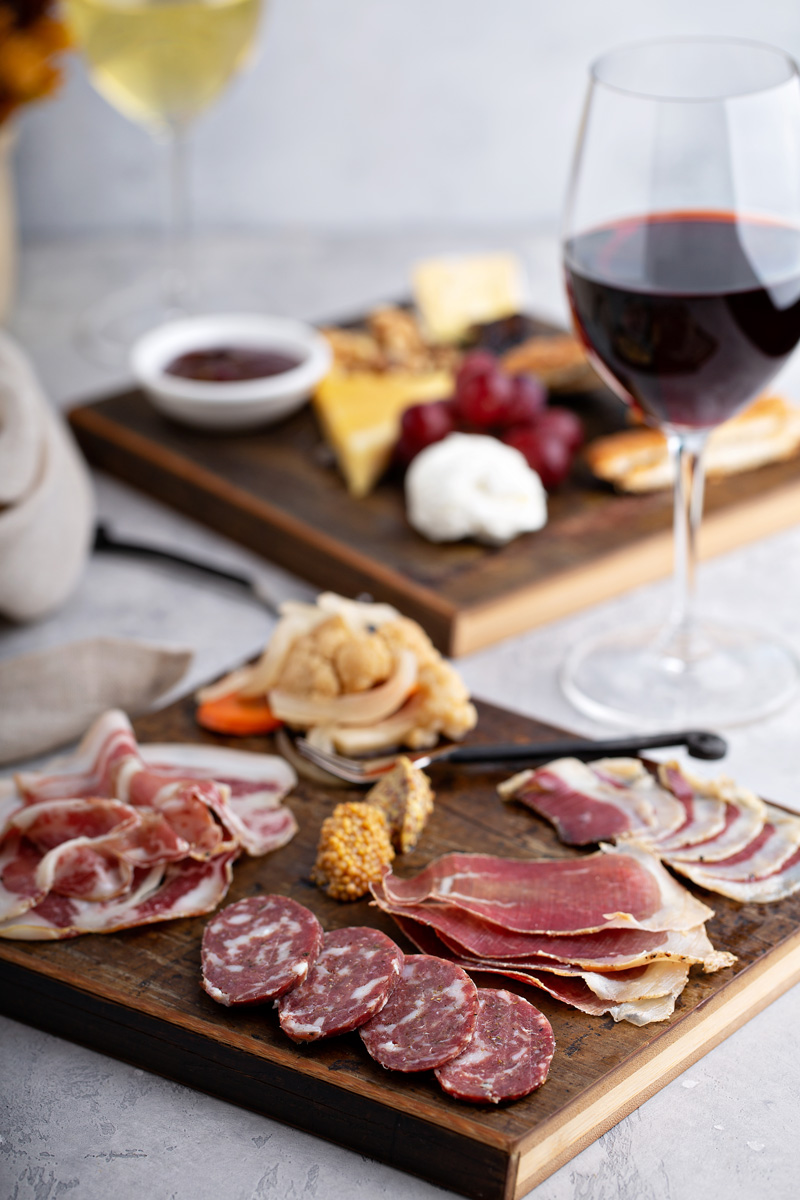
Wine Culture Magazine

Almost any vegetable can be quick-pickled—and it makes a great addition to a charcuterie board. iStock/Getty Images Plus/VeselovaElena photo
When you dine on something rich and fatty like, say, Oyama’s Belgian truffle pâté or the ridiculously creamy cheese known as Délice de Bourgogne, you need something tart to balance it and refresh your palate. Yes, wine plays that role to some extent, but what you really crave is something pickled.
Consider the classic way to serve pâté in France: a slab of meaty terrine partnered with crusty bread, grainy mustard and a pot of the tiny, mouth-puckeringly sour pickled cucumbers known as cornichons.
As any chef will tell you, acid cuts fat. What that really means is that while fat tends to block and dull your taste receptors, acid dissolves fat so you can continue to taste whatever you are eating. Acid also tends to intensify other flavours, which is why a squeeze of lemon makes everything taste brighter. And when you marry acid with sugar, the sweet and sour flavours interact to create something interesting and altogether more complex.
Which brings us to pickles. Although we think of them as sour, they typically combine acidity, salt, sweetness and spice, which can make them deliciously, mouth-wateringly complex.
Pickling is a means of preserving food. There are two basic ways to pickle things: by fermenting them in brine (think: kimchi, sauerkraut or Eastern European-style “sun pickles”); or by immersing them in a hot vinegar solution (your basic Bick’s). Both take time and a fair amount of work, and vinegar pickles also involve processing jars in a hot-water bath, but you will end up with plenty of delicious pickles to tuck into your pantry.
There is a third process, though, which doesn’t exactly preserve food, but does extend its shelf life and gives it an appealing flavour and texture: quick pickling.
Foods that are quick pickled must be refrigerated and consumed within a month, so they aren’t designed to hang around for long. They’re also sometimes called refrigerator pickles, and some say they’ll last for two months, but personally I wouldn’t risk it. They are typically made in small batches and take hardly any time at all to make (hence the name), so you can always whip up more as needed.
Toss a quick pickle together in the morning and you can have it on your charcuterie board by aperitivo hour.
Almost any vegetable, and even some fruits, can be quick pickled — carrots, radishes, cucumbers, onions, fennel, cauliflower, beans, cherries, peaches, plums, berries — so this is a great way to make the most of whatever is fresh at the farmers’ market. Plus you can add herbs and spices to create your own unique flavour combos.
Quick pickling transforms fruit and veg into something that’s both soft and crunchy, sweet and sour, perfect as a sandwich topping, grain bowl garnish, charcuterie accompaniment or on its own, straight from the jar.

Joanne Sasvari is editor of Vitis and The Alchemist magazines. She also writes about food and drink for WestJet and Vancouver Sun, and is author of the Wickaninnish and Vancouver Eats cookbooks.

Joanne Sasvari is editor of Vitis and The Alchemist magazines. She also writes about food and drink for WestJet and Vancouver Sun, and is author of the Wickaninnish and Vancouver Eats cookbooks.
Copyright © 2025 - All Rights Reserved Vitis Magazine